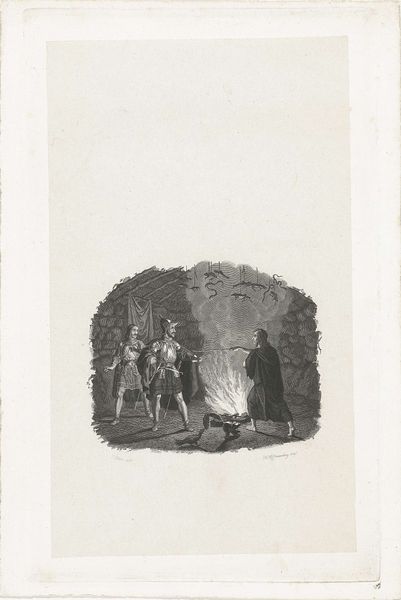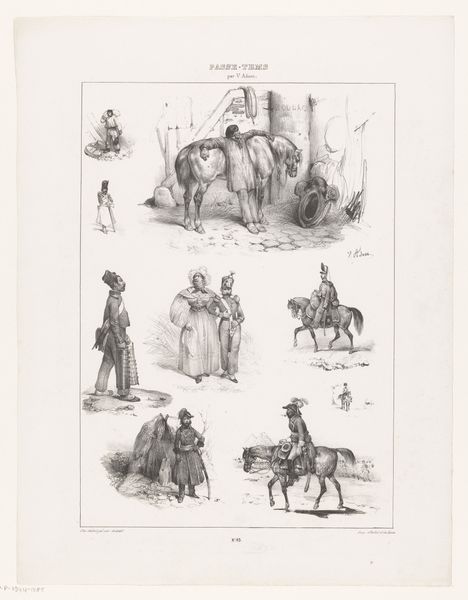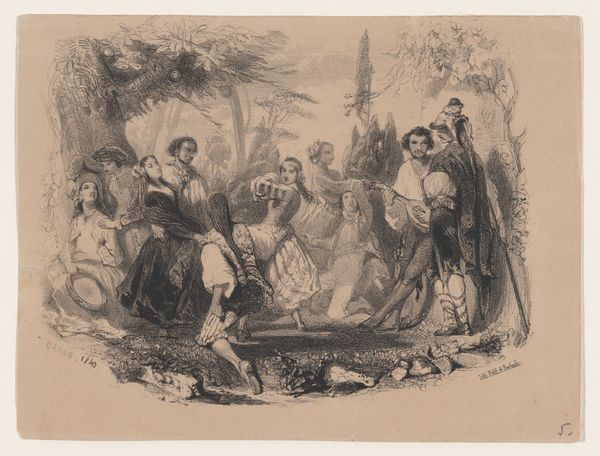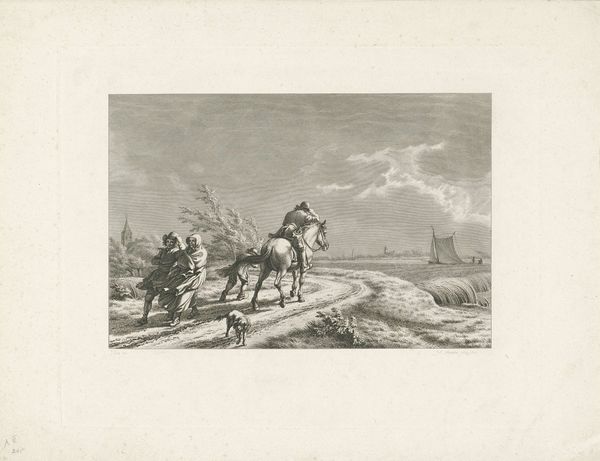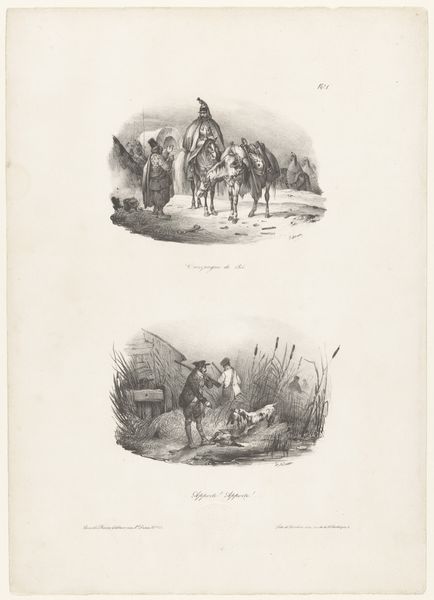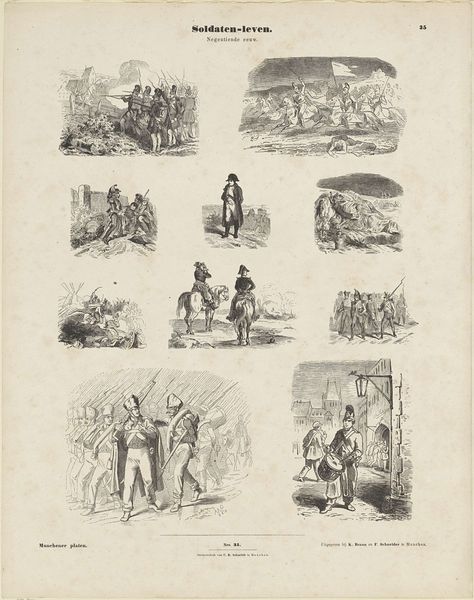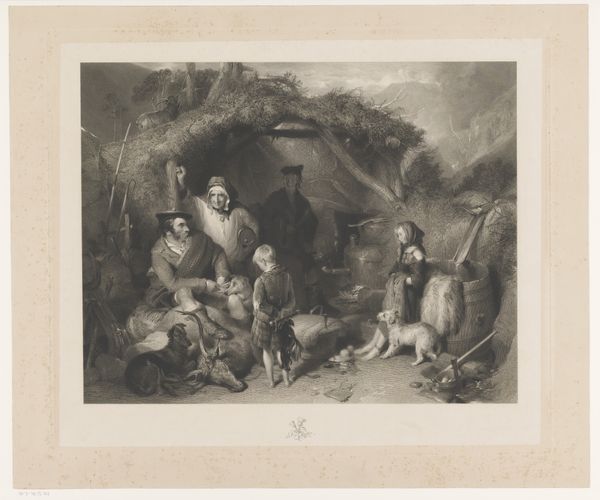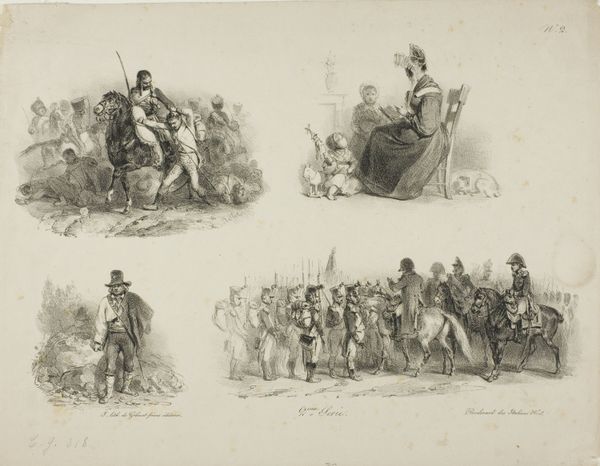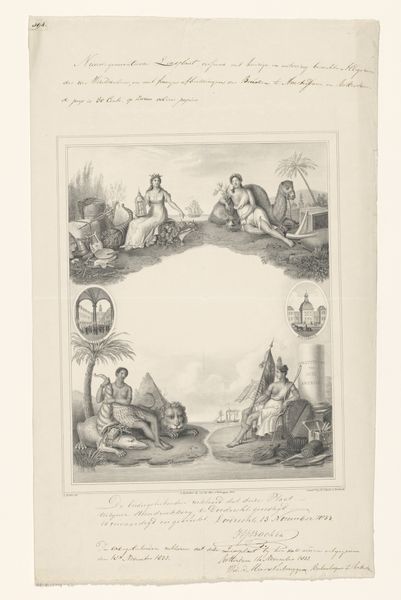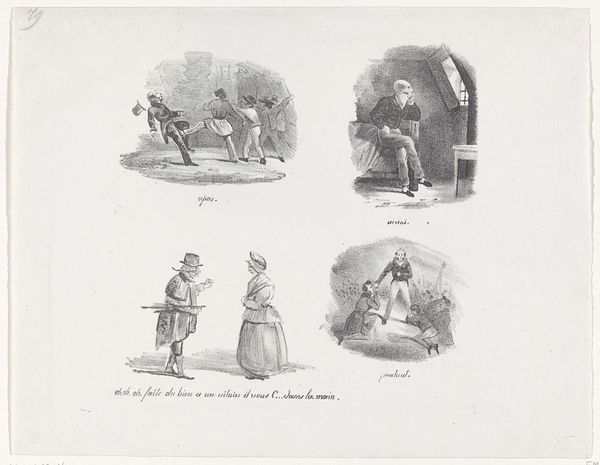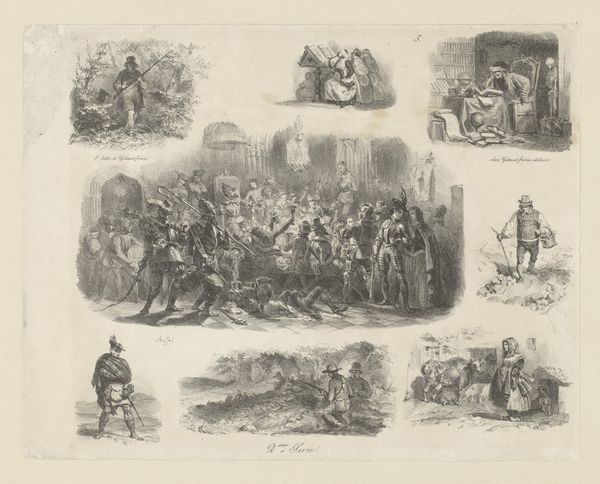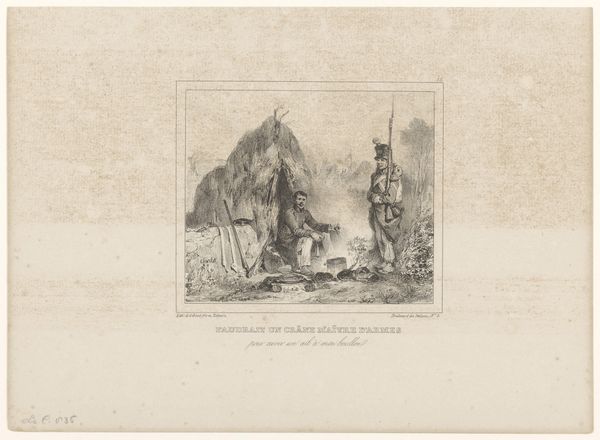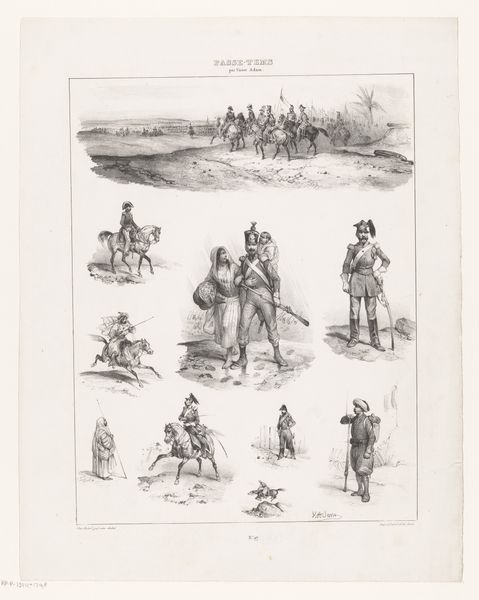
drawing, print, pen
#
portrait
#
drawing
#
imaginative character sketch
#
light pencil work
#
quirky sketch
# print
#
pencil sketch
#
personal sketchbook
#
idea generation sketch
#
sketchwork
#
character sketch
#
romanticism
#
sketchbook drawing
#
pen
#
genre-painting
#
fantasy sketch
Dimensions: height 238 mm, width 287 mm
Copyright: Rijks Museum: Open Domain
Curator: This is "Six Representations of Various Figures" by Hippolyte Bellangé, created sometime between 1818 and 1852. It’s currently held in the Rijksmuseum. Editor: It has a definite storytelling vibe, almost like panels in a graphic novel or a collection of quick character studies. There's a range of social classes depicted, and it's striking how the artist captures such distinct moods. Curator: Precisely! The lithographic process Bellangé employed allowed for the creation of multiple impressions, making art accessible to a wider audience during a time of significant social and political upheaval. Lithography enabled a certain looseness and speed, different from engraving. We are seeing him test the possibilities. Editor: Absolutely. Think about how the artist renders the costumes; you see markers of status, profession, region, and belonging. In essence, it’s a social record. And the solitary figures especially trigger so many questions, even beyond the individual narratives of each sketch. How can we trace the emergence of the bourgeois self through fashion, portraiture, and printmaking practices like these? Curator: We should also consider the market for these prints. They likely circulated amongst a growing middle class eager to consume images of their world, as well as images of other classes. There's the soldier, possibly connected to France's imperial ambitions, rendered next to a sketch that portrays poverty with the older, resting man. Editor: The romantic undertones give each figure a dramatic flair. And consider the positioning: they seem caught in between different planes of reality or possibility, but each plane represents its own distinct place in French society at that moment in time. I keep returning to that woman on the bottom, hooded: what can she tell us? Curator: It would be great to see the artist’s source material to uncover those relationships! Still, I appreciate your insight into that period as captured here; the range of subject matters provides access to a slice of life from 19th century Holland. Editor: And hopefully these sketches inspire some modern storytelling too!
Comments
No comments
Be the first to comment and join the conversation on the ultimate creative platform.
